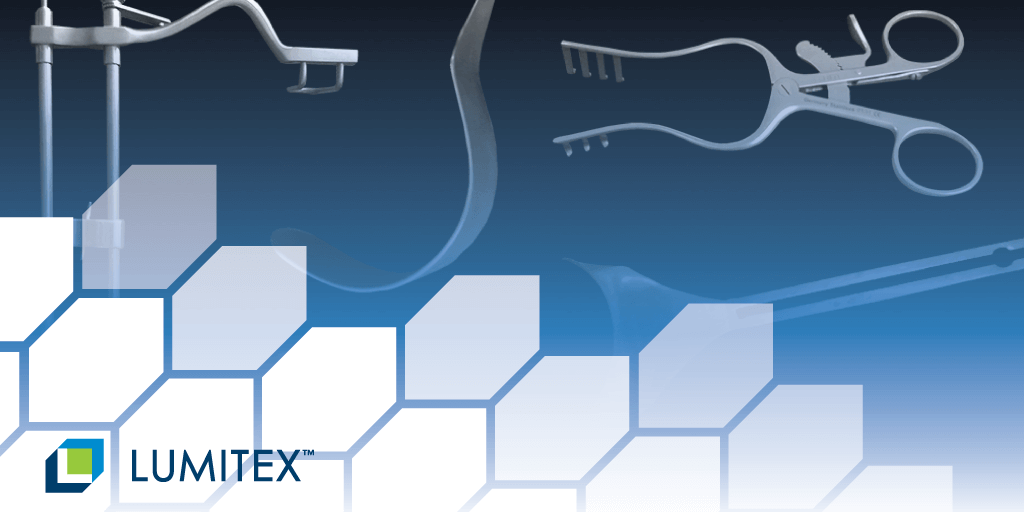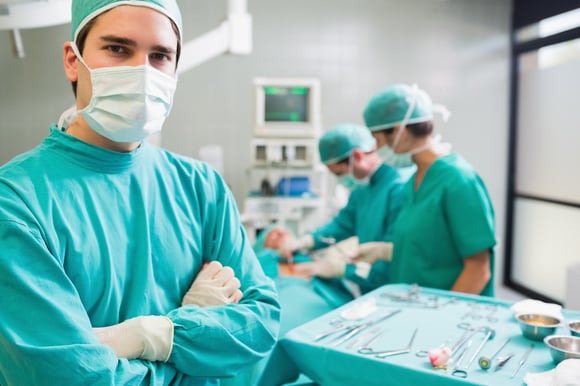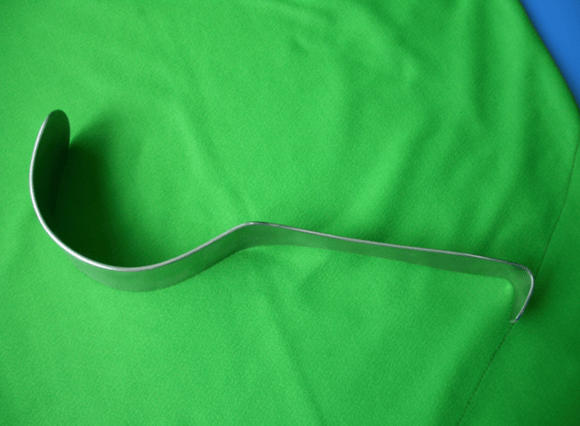
Surgical retractors help surgeons and operating room professionals hold an incision or wound open during surgical procedures. They aid in holding back underlying organs or tissues, allowing doctors/nurses better visibility and access to the exposed area.
The right retractor and medical device lighting will bring comfort and light directly into the surgical cavity where it is needed. If you're a physician, surgical rotation can be strenuous on your arms and if you're a patient you want the best care.
Retractors play a crucial role in surgery. Today they come in different sizes, shapes and designs. Surgical retractor lighting could allow surgeons to better navigate in deep or minimally-open cavities. Better visibility during and at the end of surgery is beneficial to both the surgical team and patient.
Let's dig a little deeper:
Most surgical instruments can be classified into 4 basic types:
- Cutting and Dissecting
- Clamping and Occluding
- Retracting and Exposing
- Grasping and Holding
Given our expertise in self retaining retractors with integrated lighting, we thought it prevalent to discuss number three (Retracting and Exposing). And share some of the instruments used today with their similarities and differences.
Bonus: Download our Surgical Retractors - Types, Usage & Options as a PDF.
Get the PDF version to save to your desktop and read it when it's convenient for you.
(No email required):
Surgical Retractors and the Surgeries They Belong To
Surgical retractors are not all created equal and choosing the right one is important.

There are two broad categories of retractors:
1. Hand Retractors - (Manual) must be held by an assistant, a robot or the surgeon during a procedure.
2. Self Retaining Retractors - (Stay open on their own) have a screw, ratchet or some type of clamp to hold the tissue by itself. These allow the surgeon with two free hands.
Retractors fall under the "Retracting and Exposing" instruments used in the OR. The various types of retractors are usually named after the organ which they are used in conjunction with.
For example, retractors which are used to retract an abdomen, are called abdominal retractors or self retaining abdominal retractors. If it's your skin being handled, there are specific skin retractors.
I choose a sample of retractors from each category to exhibit the vast array available. They are listed in no particular order. All are of great value and needed by the medical profession.
Common Hand-held Retractors (Manual)
1. Senn - is a handheld, double-ended retractor used to retract primarily surface tissue. "Often used in plastic surgery, small bone and joint procedures, or throidectomy and dissection of neck tissue."
2. Army- Navy - Used to retract shallow or superficial incisions. From small wounds to abdominal operations.
3. Ribbon (Malleable) Used to retract deep wounds. May be bent to various shapes to assist in holding back tissue.
4. Hohmann - used in orthopedics to expose bone for procedures.
5. Farabeuf - general use. It is a versatile handheld retractor that is used in multiple procedures. It may be used in dentistry, wrist and hand procedures, or in hernia repair to name a few.
6. Meyerding - frequently used to hold back tissue and muscle in spinal and neurosurgical procedures such as laminectomy.
7. Deaver - used to retract deep abdominal or chest incisions. Used in Cholecystectomy (removal of gallbladder) for retraction of right lobe of liver. Used in Truncal vagotomy (division of the main trunk of the vagus nerve) for retraction of left lobe of liver.

image credit: Deaver retractor
8. Richardson - retract abdominal or chest incisions. Used for holding back multiple layers of deep tissue. This is one of the most common general retractors.
Self-Retaining Retractors (Hold their shape and position once set in place)
1. Weitlaner - It is a popular instrument, most commonly used in basic plastic surgery, large bone and joint procedures.
2. Balfour Abdominal Retractor - Retract wound edges during deep abdominal procedures.
3. Finochietto Rib Retractor (rib spreader) specifically designed to separate ribs in thoracic surgery.
4. Hip Retractor system - Millennium surgical has a huge selection of surgical instruments for every specialty. One being the Hip Retractor System. The self retaining hip retractor helps to free assisting personnel while providing excellent exposure during hip arthroplasty and hip fracture surgery.
5. Gelpi - retract shallow incisions. Often used in smaller surgical sites. Common in spine surgery.
Speaking of spinal surgery, there are three possible approaches to the spine during a surgical procedure. The surgeon's approach to the spine impacts the type of instruments that will be used for the procedure.
If you ever experienced excruciating back pain and needed relief, you might've heard of these options before...
3 different approaches to spine surgery:
1. Anterior - from the front of the spine
2. Posterior - from the back of the spine
3. Lateral - on the side of the spine
The third or lateral approach uses minimally invasive instruments. It is used to treat leg or back pain generally caused by degenerative disc disease.
The procedure is performed throught the patient's side, avoiding the major muscles of the back. The procedure was once traditionally performed with a large incision on the back, stripping muscles away from the spine. It typically meant longer down time.
Good news:
Today, with a small incision off the midline of the spine, surgeons can remove the problem area (joint and disc) and place a graft filled with your own bone into the disc space.
Given time the bone fuses with less downtime compared to the traditional way. Frequency of Minimally Invasive Lumbar Spinal Fusion Surgery Grows.
Conclusion
The surgical retractors list is enormous when you consider the extent of your whole body-- head, neck, torso, arms and legs, all your vital organs, tissues, and 100 trillion cells.
Retracting instruments, retract and expose, for exposure to a surgical site. The main goal is to not necessarily reduce the number of assistants in the OR but to provide better exposure and safety for the patient.
Integrating light into surgical sites can enhance retractor systems and enable better visualization. As a company, we engineer light where it is needed and create solutions that could impact your life. One being the addition of light to medical tools.
Do you feel surgeries with a less invasive approach are in need of improved visualization?
I would love to hear your thoughts in the comments below.






Comments